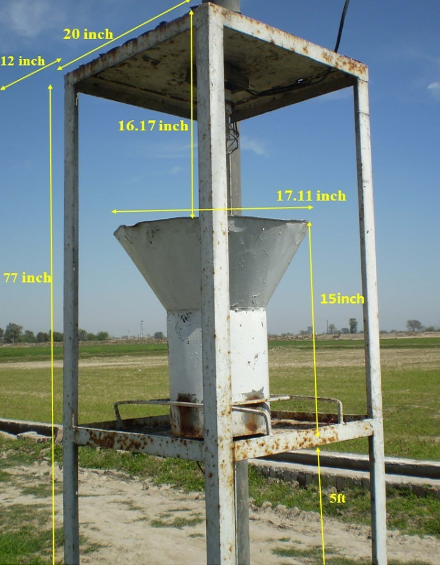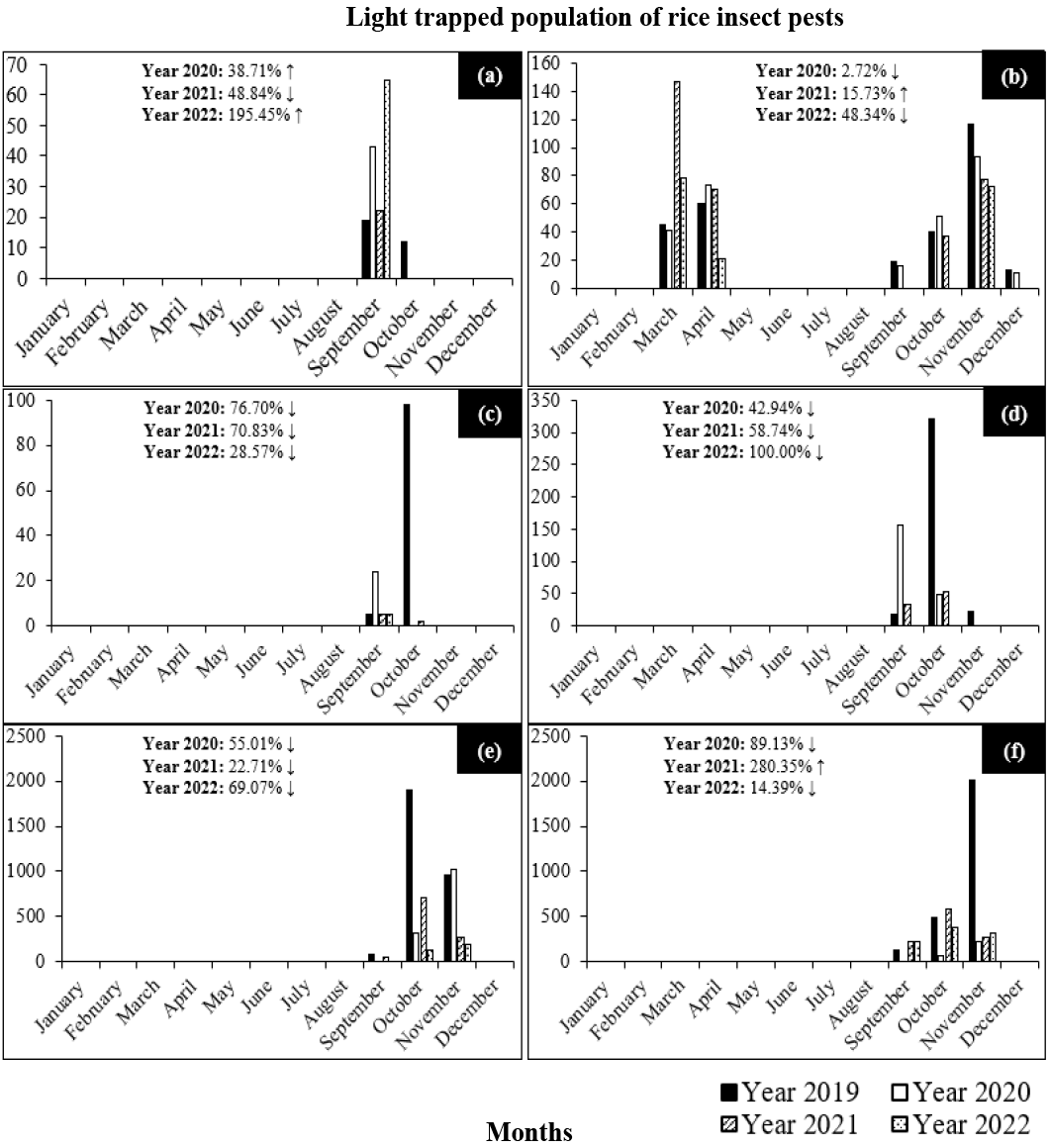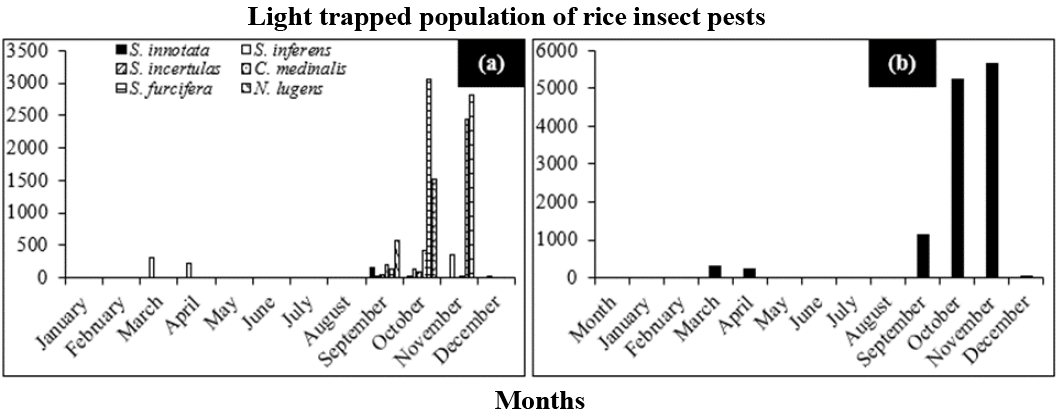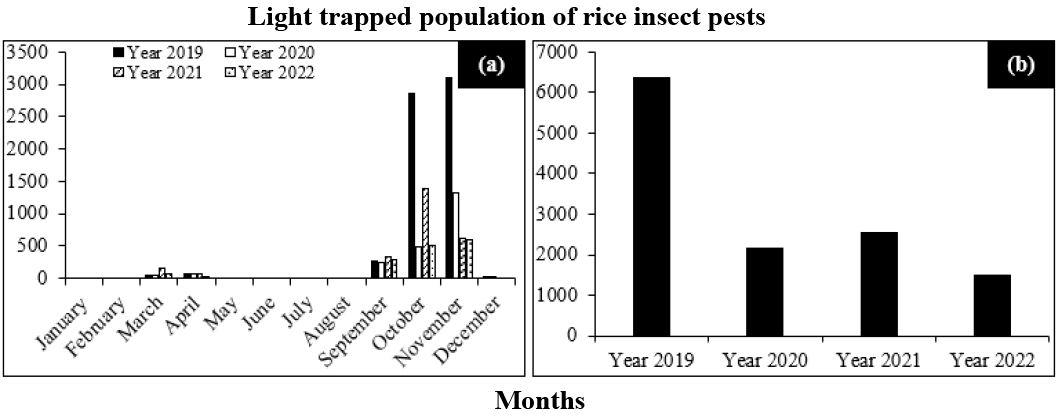Exploring the Utility of Light Traps for Early Detection and Management of Rice Insect Pests
Exploring the Utility of Light Traps for Early Detection and Management of Rice Insect Pests
Bilal Atta1*, Arshed Makhdoom Sabir1, Muhammad Dildar Gogi2, Muhammad Asif Farooq3, Muhammad Ijaz1, Tahir Hussain Awan1, Muhammad Ahsin Ayub4, Muhammad Usman Saleem1, Amara Nasiba1
Schematic diagram of the light trap design.
Light trapped population of Scirpophaga innotata (a), Sesamia inferens (b), Scirpophaga incertulas (c), Cnaphalocrocis medinalis (d), Sogatella furcifera (e) and Nilaparvata lugens (f) during the year 2019-22. The graphs also depict the percent increase (↑) and decrease (↓) in trapped insect population from the previous year.
(a) Monthly light trapped population of Scirpophaga innotata, Sesamia inferens, Scirpophaga incertulas, Cnaphalocrocis medinalis, Sogatella furcifera and Nilaparvata lugens during the year 2019-22. (b) Aggregate monthly light trapped population of rice insect pests during the year 2019-22.
(a) Yearly light trapped population of Scirpophaga innotata, Sesamia inferens, Scirpophaga incertulas, Cnaphalocrocis medinalis, Sogatella furcifera and Nilaparvata lugens during the year 2019-22. (b) Aggregate yearly light trapped population of rice insect pests during the year 2019-22.













